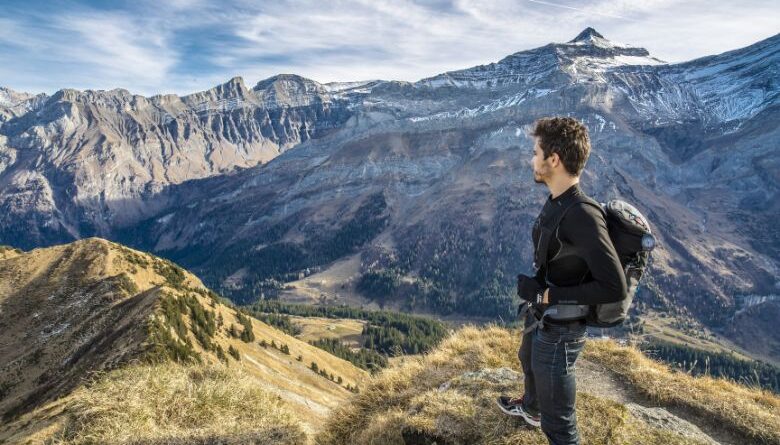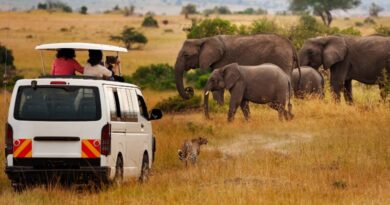Travel Photography Gear: Essential Equipment for Picture-Perfect Shots
Travel Photography Gear: Essential Equipment for Picture-Perfect Shots
Introduction
When it comes to travel photography, capturing picture-perfect shots requires more than just a good eye. Having the right equipment plays a crucial role in ensuring that every moment is immortalized in stunning detail. In this article, we will explore the essential gear that every travel photographer should consider packing before embarking on their adventures. From cameras and lenses to tripods and accessories, we’ll cover everything you need to elevate your travel photography to new heights.
1. Choosing the Perfect Camera
The foundation of great travel photography starts with selecting the right camera. Consider factors such as size, weight, and image quality. Mirrorless cameras are popular choices due to their compactness and high-resolution capabilities. Additionally, DSLRs still offer excellent performance and versatility for photographers who prefer the traditional feel.
2. Selecting the Ideal Lenses
Having the right lenses is paramount for capturing different perspectives during your travels. A versatile zoom lens is ideal for various situations, providing both wide-angle and telephoto capabilities. Prime lenses are perfect for low-light conditions and creating stunning bokeh effects.
3. Packing a Sturdy Tripod
A sturdy tripod is a must-have for travel photographers, especially for capturing long exposure shots or stable videos. Look for lightweight and compact options that can fit into your travel bag without adding much weight.
4. Carrying a Reliable Camera Bag
A well-designed camera bag is essential for safeguarding your photography gear during your journeys. Look for a bag with padded compartments and water-resistant materials to protect your equipment from the elements.
5. Don’t Forget Extra Batteries and Memory Cards
Running out of battery power or storage space can be frustrating during a photo shoot. Always carry spare batteries and memory cards to avoid missing out on any incredible shots.
6. Utilizing Polarizing and ND Filters
Polarizing filters help reduce glare and reflections while enhancing color saturation in your photos. Neutral Density (ND) filters, on the other hand, are essential for controlling exposure in bright environments or when shooting long exposures.
7. Remote Shutter Release for Stability
Using a remote shutter release allows you to take photos without touching the camera, reducing the risk of camera shake and ensuring sharper images.
8. Investing in a Quality Camera Strap
A comfortable and reliable camera strap is often overlooked but can significantly impact your photography experience during long hours of shooting.
9. Portable External Hard Drive for Backups
Backing up your photos on the go is crucial to prevent data loss. Carry a portable external hard drive to create backups and free up space on your memory cards.
10. Carrying a Cleaning Kit
Traveling exposes your gear to various elements, and dust or dirt on the lens can ruin your shots. Always pack a cleaning kit to keep your camera and lenses in pristine condition.
11. Using a Reflector for Better Lighting
A portable reflector is an inexpensive tool that can help manipulate lighting conditions, particularly when shooting portraits or in shaded areas.
12. Embracing Smartphone Photography
While having a dedicated camera is essential, smartphones have evolved to become powerful photography tools. Use your smartphone for quick snaps and behind-the-scenes shots.
13. Understanding Composition and Framing
Mastering composition and framing techniques is crucial for creating visually stunning travel photographs. Pay attention to leading lines, the rule of thirds, and symmetry to create impactful images.
14. Capturing Candid Moments
Some of the best travel photos come from capturing candid moments of people and culture. Be patient and observe your surroundings to document authentic experiences.
15. Post-Processing and Editing
The final step in travel photography is post-processing and editing. Use software like Adobe Lightroom or Photoshop to enhance your images subtly and bring out the best in your shots.
Conclusion
With the right travel photography gear and a keen eye for detail, you can capture picture-perfect shots that will transport viewers to the heart of your adventures. Investing in high-quality cameras, lenses, and essential accessories will undoubtedly elevate the quality of your travel photography.
FAQs
- Do I need an expensive camera for travel photography? While high-end cameras can offer advanced features, you can still achieve excellent results with more affordable options. Focus on your photography skills and understanding your gear’s capabilities.
- What is the best lens for travel photography? A versatile zoom lens with a wide focal range is an excellent choice for travel photography. It allows you to capture various subjects without changing lenses frequently.
- How do I keep my camera gear safe during travel? Invest in a well-padded camera bag and avoid leaving your gear unattended. Consider getting insurance for your equipment as an added layer of protection.
- Should I shoot in RAW or JPEG format? Shooting in RAW format preserves more image data and allows for better post-processing. If you have the storage space, shooting in RAW is recommended for more control over your final images.
- What are some tips for capturing stunning landscapes? Look for unique perspectives and use elements like leading lines and foreground interest to create visually compelling landscape shots.
Remember that while having the right equipment is crucial, your passion for photography and willingness to experiment is what will truly make your travel photos stand out. Happy shooting!
Solo Travel Safety: Tips for a Confident and Secure Solo Journey




